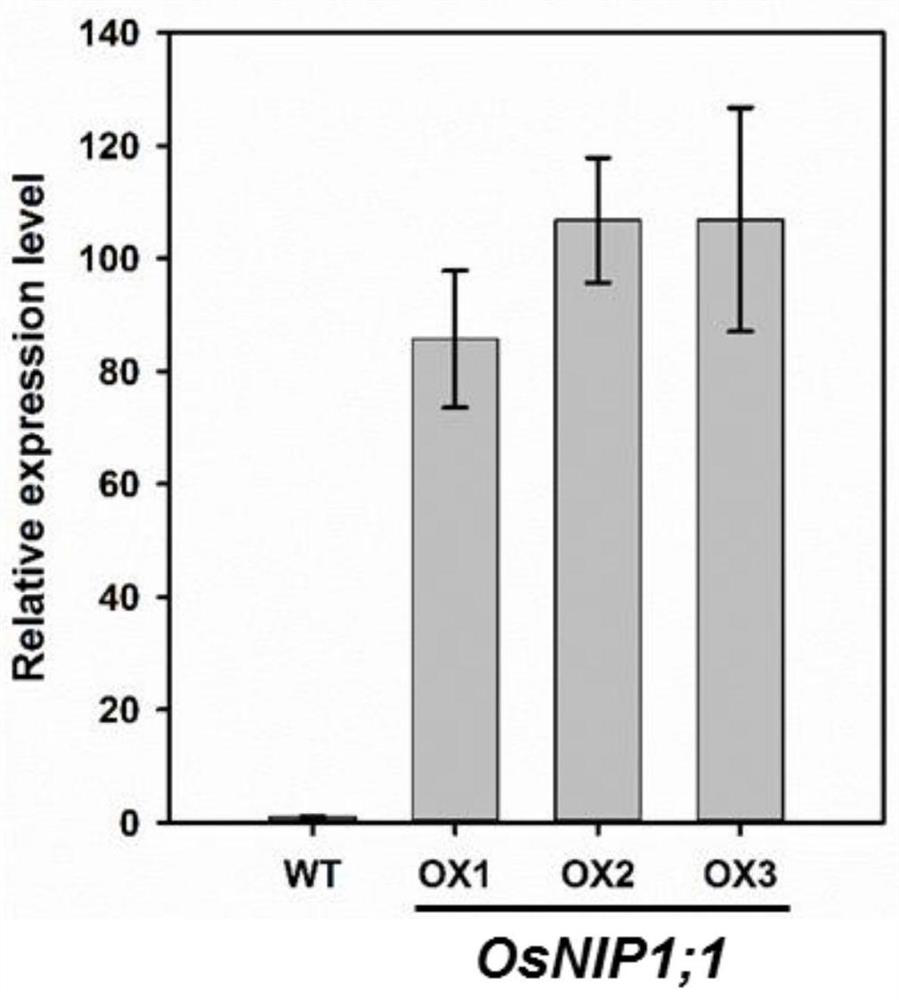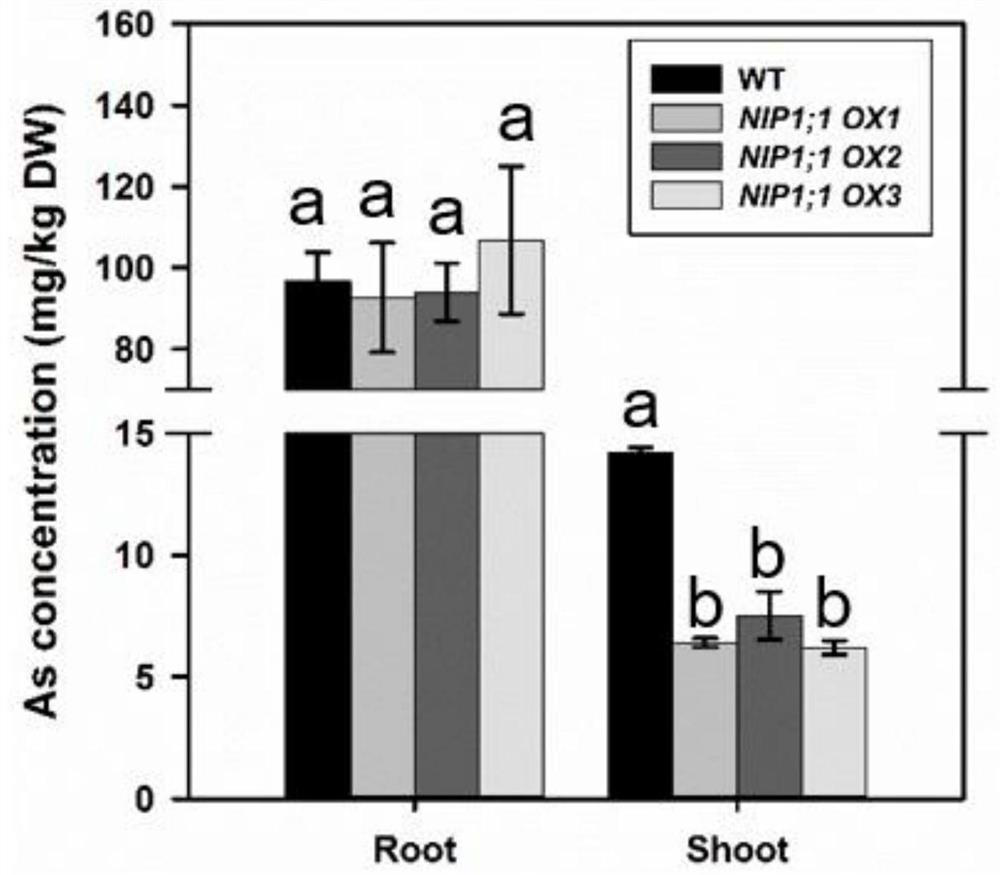Application of rice aquaporin coding gene osnip1;1
A technology of aquaporin and coding gene, applied in the field of rice aquaporin coding gene OsNIP1, can solve the problem of low gene similarity and achieve the effect of reducing arsenic content
- Summary
- Abstract
- Description
- Claims
- Application Information
AI Technical Summary
Problems solved by technology
Method used
Image
Examples
Embodiment 1
[0034] Example 1 Transport activity test of aquaporin-encoding gene OsNIP1; 1 in Xenopus laevis oocytes.
[0035] According to the cDNA reading frame sequences of NIP1;1, NIP2;1(Lsi1) and NIP3;1 genes, PCR primers were designed, and restriction endonuclease sites were introduced on the upstream and downstream primers respectively. The primer sequences are shown in the table below.
[0036]
[0037] The amplified PCR product was detected by agarose gel electrophoresis, separated and recovered by cutting the gel. After the product was recovered, it was digested with the corresponding restriction endonuclease, and the frog egg expression vector pT7TS was digested at the same time. The digested vector was combined with The PCR fragments were ligated with T4 ligase, transformed into Escherichia coli and positive clones were extracted for enzyme digestion and DNA sequencing identification. After the correct plasmid was detected and linearized, the mMESSAGE mMACHINE (Ambion) kit w...
Embodiment 2
[0039] Embodiment 2 OsNIP1; Construction of 1 overexpression vector
[0040]1) Extraction of total RNA: Disinfect the rice seeds with 30% sodium hypochlorite solution for 30 minutes, wash 4-5 times with sterile water, then culture them with 1 / 2 MS medium for about 2 weeks, select seedlings with the same size and transfer them to the cultured After culturing in 1 / 2 Kimura nutrient solution for one week, the leaves were stored in liquid nitrogen, and RNA was extracted using a total plant RNA extraction kit (Beijing Biotec Company).
[0041] 2) The total cDNA was synthesized using a reverse transcription kit (Nanjing Nuoweizan Company).
[0042] 3) Obtaining the full length of OsNIP1; 1 gene and constructing the overexpression vector:
[0043] Overexpression primers were designed according to the full-length cDNA sequence of OsNIP1; 1, and the primer sequences were as follows:
[0044] OsNIP1; 1-F:AGAGGATCCCCGGGTACCATGGCAGGAGGTGACAACAACTC (SEQ ID NO. 1);
[0045] OsNIP1; 1-R: ...
Embodiment 3
[0048] Example 3 Aquaporin coding gene OsNIP1; 1 overexpression transgenic material acquisition
[0049] The Agrobacterium transfected with the pTCK303-OsNIP1;1 plasmid obtained in Example 2 was used to infect the Nipponbare rice callus, and after co-cultivation for 2 days, transgenic plants of the T0 generation were obtained through selection, differentiation, rooting, and seedling hardening.
[0050] Reagents and Solutions Abbreviations
[0051] Among the present invention, the used English abbreviation of culture medium is expressed as follows: 6-BA (6-benzyl adenine); Car (carbenicillin); NAA (naphthalene acetic acid); IAA (indole acetic acid); -D (2,4-dichlorophenoxyacetic acid); AS (acetosyringone); CH (hydrolyzed casein); L-pro (L-proline); L-Glu (L-glutamine); MES (2-morpholineethanesulfonic acid); N6 (N6 macroelement solution); B5 (B5 trace element solution); AA (AA macroelement); Agar (agar).
[0052] Solutions and Media Formulations
[0053] Ⅰ hormone preparation...
PUM
 Login to View More
Login to View More Abstract
Description
Claims
Application Information
 Login to View More
Login to View More - R&D
- Intellectual Property
- Life Sciences
- Materials
- Tech Scout
- Unparalleled Data Quality
- Higher Quality Content
- 60% Fewer Hallucinations
Browse by: Latest US Patents, China's latest patents, Technical Efficacy Thesaurus, Application Domain, Technology Topic, Popular Technical Reports.
© 2025 PatSnap. All rights reserved.Legal|Privacy policy|Modern Slavery Act Transparency Statement|Sitemap|About US| Contact US: help@patsnap.com



